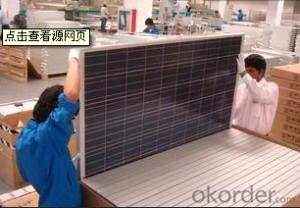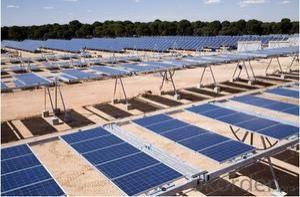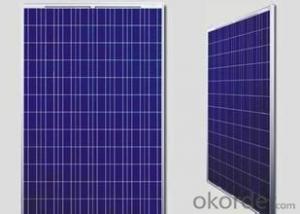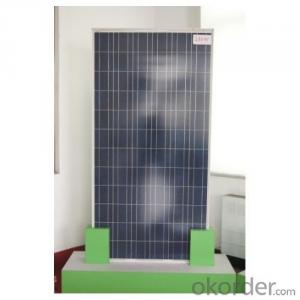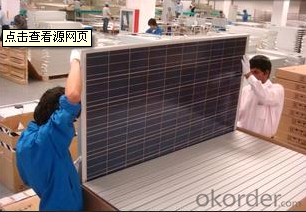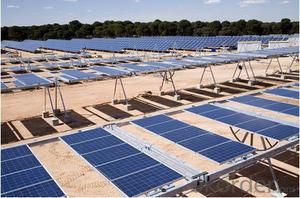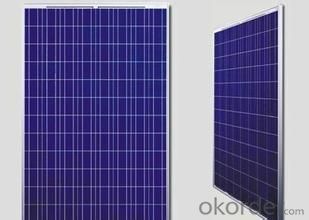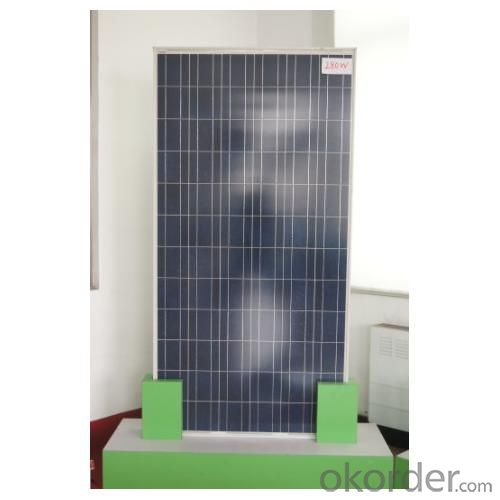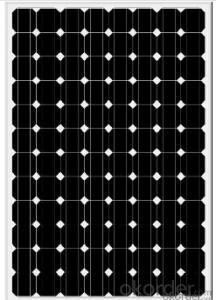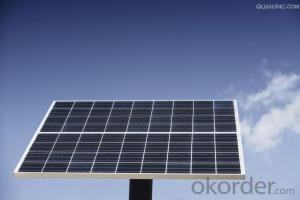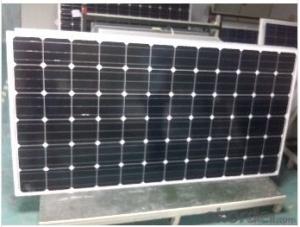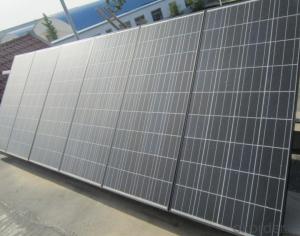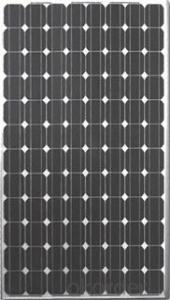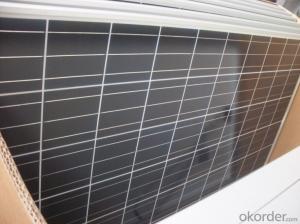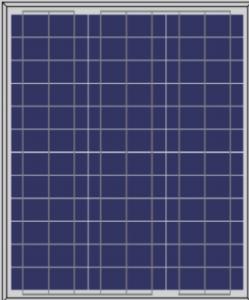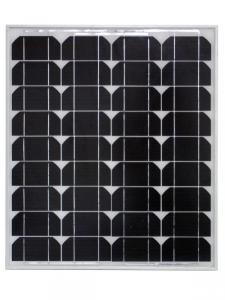Allegiant Stadium Solar Panels - CNBM Poly & Mono Solar Panels Made in Thailand
- Loading Port:
- Guangzhou
- Payment Terms:
- TT OR LC
- Min Order Qty:
- 26 pc
- Supply Capability:
- 100000 pc/month
OKorder Service Pledge
OKorder Financial Service
You Might Also Like
Characteristics of Polycrystalline Solar Panel
I Solar Cell : High efficiency crystalline solar cell. Even if under the weak light, the solar module can produce maximum power output.
II Tempered glass (toughened glass): Anti-reflecting coating and high transmission rate glass increase the power output and mechanical strength of solar module.
III EVA and TPT: Using high quality EVA and TPT to prevent destroying and water.
IV AI frame: Without screw, corner connection. 6 holes on the frame can be installed easily.
V Junction box: Multi function junction box with water proof.
VI Long lifetime: ≥25 years; Less power decrease.
VII Good performance of preventing from atrocious weather such as wind and hails.
VIII Resisting moisture and etching effectively, not effected by geology. .
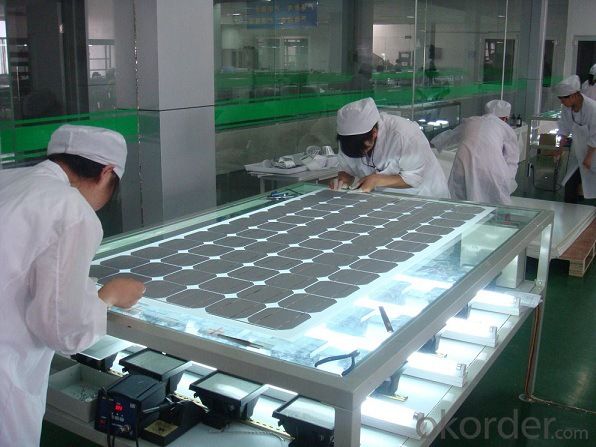
Standard Test Conditions of Polycrystalline Solar Panel
The opto-electrical specifications shown below are stabilized values being measured at Standard Test Conditions of multicrystalline silicon Solar Panel, Irradiance: 1000W/m2, Spectrum: AM1.5 at 25°C, The info below is subject to manufacturing tolerances. Where appropriate minutes of measurement are available and are used for the dimensioning of the installation.
Currently,We have 250w-300w solar panel stocks in Both West and East Coasts made in Vietnam,India,Korea,Malaysia and Japan.Meanwhile,we also arrange production line in Wisconsin,USA.If you're interested,please contact us soon.
Thanks for your time.
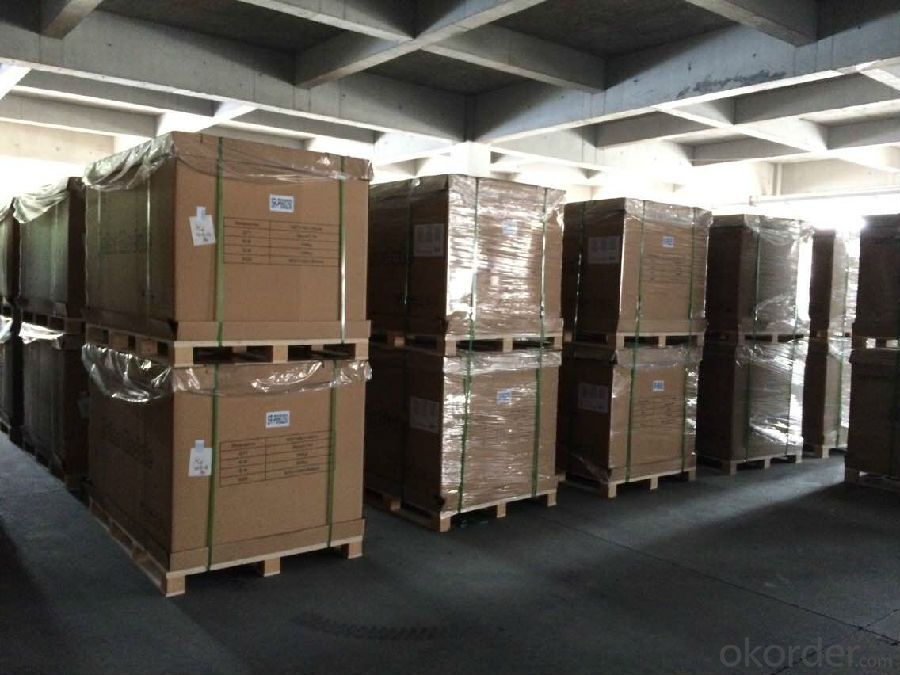
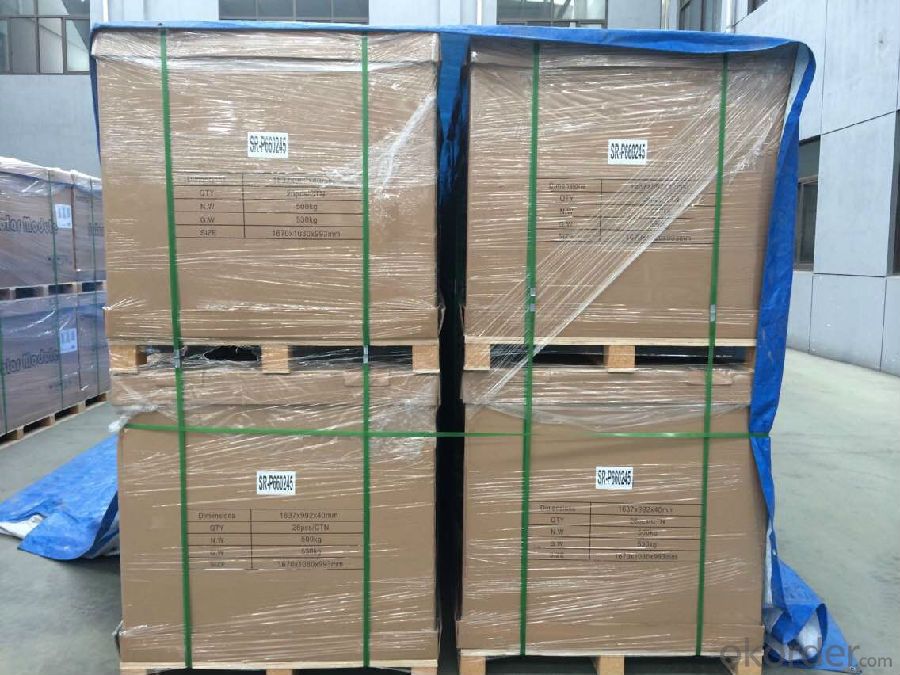
- Q: What is the impact of roof color on solar panels' performance?
- The impact of roof color on solar panels' performance is minimal. While a darker roof color may slightly increase the temperature of the panels, leading to a slight decrease in efficiency, the difference is typically not significant enough to significantly impact their overall performance. Other factors such as panel tilt, orientation, shading, and maintenance have a much larger influence on solar panels' performance.
- Q: Can solar panels be used for powering a manufacturing facility?
- Yes, solar panels can be used to power a manufacturing facility. Solar energy can be converted into electricity, which can then be used to power various processes and equipment in a manufacturing facility. This can help reduce reliance on traditional energy sources and promote sustainability. However, the feasibility and capacity of solar power for a manufacturing facility would depend on factors such as the facility's energy requirements, available space for solar panel installation, and local sunlight conditions.
- Q: Can solar panels be used in hot climates?
- Yes, solar panels can be used in hot climates. In fact, solar panels actually perform better in higher temperatures as they rely on sunlight rather than heat to generate electricity. However, excessive heat may slightly reduce the efficiency of the panels, but modern solar technology is designed to handle and adapt to varying weather conditions, including hot climates.
- Q: I have a solar panel i got for free and I don't know what to do with it. Its kinda big at about 20x 0and it puts our 2 VOC / .23 ISC. I don't know of anything that I could use it for. Its too big to say charge a phone or ipod....any suggestions??
- Hey AJ, Tom is quite right, a panel that size is a great trickle charger at .2 amps. If you have a good sized 2 volt battery, like from a truck, or for a boat trolling motor (it should be at least 60 amp hours) you can hook it to the battery and it will charge it slowly anytime the sun shines. Don't worry about the voltage, most 2 volt nominal volt panels are wired for 8 - 9 volts, and if you hook them to a battery, the panel voltage comes right down to the batteries charging curve voltage anyway, they are designed for that. What you do need is a diode. A diode is an electrical check valve, allowing current to flow in one direction, but not the other. This will prevent the battery from discharging through the panel at night. Many panels today come with diodes inside the junction box on the back of the panel. If yours does not have any, go to Radio Shack, look for a 6 amp silicone diode, usually around75 cents. Put it in series between the panel and the battery, then, while you have a voltmeter hooked to the battery, connect the panel/diode to the battery and see if the voltage goes up slightly. If it does, you're all set. If not, turn the diode around and try it again. It has to be connected into the circuit the correct direction. Many people will state that you need a charge controller, but this is not necessary if your panels max current, ISC is less than 2% of your batterys amp hour capacity. In your case, if you have a 60 AH or larger battery, skip the controller. There is a great discussion about this in Richard Perez's book, I will list it below. If you want to learn more about these devices, there is a great magazine that gets into the nuts and bolts of renewable energy, it's called Home Power Magazine, the link is below. We started by hooking a slightly larger panel to some golf cart batteries 2 years ago, reading that magazine and going to some energy fairs. Today our home is completely powered by the wind and sun. Check it out sometime. Take care, Rudydoo
- Q: I am fairly new to the solar panel scene, and am eager to try to set one up myself instead of buying a kit. I am looking for a solar panel that puts out 00 Watts or more, and can produce more than 20 volts. Thanks
- If you want to go cheap, Harbor Freight Tools sells a 45W solar panel kit for under $200 (minus storage batteries). You could buy 2 and be roughly at your desired wattage. I don't own one but they get decent reviews.
- Q: Composition and function of solar panels
- In addition to the quality of EVA itself, the components of the manufacturers of laminated technology is also very large, such as EVA glue degree is not up to standard, EVA and tempered glass, backplane bonding strength is not enough, will cause EVA early aging, affecting components
- Q: Monocrystalline panels are sooo expensive! Thanks for reading.
- image voltaic thermal or warm water beats PV or Photovoltaic on a daily basis. The Mono and Poly are the main conventional. they provide years of provider and function a shown song checklist. they do no longer seem to be very warmth tolerant. production will flow down on warmer day as maximum shrink sheets will instruct. Amorphous Panels are greater warmth tolerant. they're additionally greater valuable at production with ,low easy or in part cloudy days. They produce much less what in keeping with sq. foot and want a larger section. First image voltaic produces those variety of panels. HIT by utilizing Sanyo blends those 2 together to produce a panel with the main suitable of the two structures. All PV is costly. The payoff tiers from 7-2 many years in keeping with many components.
- Q: Photo-Voltaic solar panels are very expensive. Most of a home's energy needs are for heating water, heating and air-conditioning. All of these can be met with thermal solar collectors which are much less expensive. The thermal solar panels would heat water stored in a hot water tank which then can be used as hot water, to heat the home, or as the heat source to a Lithium Bromide Absorption chiller to air-condition a home. With the base line needs met without expensive panels and without inefficient energy conversions, only a small Photo-Voltaic array would be needed for the remaining power needs and since those needs are variable, there would still be power to sell to the grid.
- That sounds good to me. I'm all for any kind of new energy as long as it's renewable and doesn't pollute the environment. I'm even a fan of solar water heating.
- Q: I'm going to this camp and the instructors asked us to be prepared tomorrow to build a sun tracker for a solar panel. Does any one have any ideas, tips, or advice?
- Since the sun moves in the sky on a very predicatable course you don't need a closed loop control system to track it. All you need is a clock-drive motor and the proper gearing for your latitude. The clock drive motor will move at a constant rotational velocity based on time, and when it is geared down properly the angle of the shaft will follow the sun. Make sure the clock motor is powerful enough to move the solar panel, etc. That's a start, anyway. .
- Q: I am starting to think about solar panels as an option for my home. I have done some research on panels, to be honest its all very confusing. There are many different panels some with 60 watts some all the way up to 20 watts. My household currently uses about 2700 to 3400 kWh every two months. So based off of my power usage maybe you can answer some of the following questions:What kind of panels should I be looking at?Which panel manufacturers give the best bang for the buck (reliable/affordable)?Anything else I should be concerned about?I am just starting out in educating myself on solar power so please excuse me if I sound very naive. Any information that you may have will be helpful. Thanks in advance.
- Unfortunately, I can't give you a lot of specifics on what you should use. However, I can tell you that the very best system for you simply might not be available to you, in which case it really doesn't matter how good it is. Your best bet would be to talk to a supplier in your area and see what is available, THEN start looking at the differences between those. Unfortunately, solar panels aren't quite to the point of being a common-place product...yet. Another thing to consider would be how old your roof is. You might want to look into the possibility of building-integrated materials if you are in need of a new roof. Talking with somebody who sells the panels in your area will help you understand a lot more than just doing raw research. Get their take on it, then fact check and research what they tell you so you know you're not getting ripped off.
Send your message to us
Allegiant Stadium Solar Panels - CNBM Poly & Mono Solar Panels Made in Thailand
- Loading Port:
- Guangzhou
- Payment Terms:
- TT OR LC
- Min Order Qty:
- 26 pc
- Supply Capability:
- 100000 pc/month
OKorder Service Pledge
OKorder Financial Service
Similar products
Hot products
Hot Searches
Related keywords
